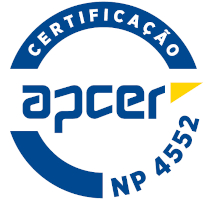Minerais com relevância ambiental em sistemas contaminados por drenagem ácida: propriedades e reatividade à escala nanométrica
- Universidade do Minho(líder)
- Laboratório Ibérico Internacional de Nanotecnologia(parceiro)
- Universidade de Évora(parceiro)
Resumo
As águas de drenagem ácida, conhecidas por ?Acid Mine Drainage (AMD), formam-se pela oxidação de sulfuretos,
libertando acidez, sulfato e metais para os sistemas aquáticos. A sua evolução conduz à formação de colóides, que
aqui representam os precipitados-AMD, tipicamente ocorrentes em dimensões nanométricas. AMD é um problema
ambiental mundial que causa a degradação total dos ecossistemas. A atual estratégia de renovação da atividade
mineira na Europa põe em destaque a relevância das questões associadas à AMD.
A ideia geral do projeto centra-se na formação e evolução dos colóides, uma vez que estes constituem um dos
principais processos de mobilização de elementos tóxicos. Assim, uma das metas é conhecer as suas propriedades
e o seu papel nos processos de mobilização de elementos traço. A caracterização das nanopartículas permitirá ainda
compreender o seu papel em relação à toxicidade e à participação em processos de atenuação natural.
A caracterização de nanopartículas constitui uma tarefa complexa devido à heterogeneidade, à baixa cristalinidade
e à dimensão das fases em estudo. Assim, o caráter inovador do projeto baseia-se, desde logo, na identificação
mineralógica e na sua caracterização detalhada, que inclui aspetos químicos e morfológicos. O conhecimento destas
propriedades orienta a investigação no sentido da síntese de nanopartículas e da avaliação de potenciais aplicações.
A estratégia inclui o estudo de precipitados-AMD ricos em ferro, principalmente óxidos-hidróxidos e hidroxisulfatos.
Entre as técnicas usadas contam-se a DRX, MEV, MET, FTIR e ICP. Além disso, serão também realizados ensaios
para examinar a capacidade de adsorção das nanopartículas e a sua evolução térmico-mineralógica para efeitos de
aplicação industrial.
A aplicação de técnicas sensíveis do ponto de vista superficial, principalmente de natureza espectroscópica, continua
a ser um desafio. Não há conhecimento prévio suficiente sobre os precipitados-AMD, sobretudo por serem misturas
heterogéneas. Para superar esta lacuna, a proposta prevê a síntese de minerais modelo, que funcionarão como
materiais de referência.
Nos últimos anos, a nanotecnologia tem gerado extensa literatura sobre aplicações de nanopartículas, mas esses
estudos são focados essencialmente em materiais sintéticos. A originalidade dos resultados esperados através deste
projeto será um passo adiante no conhecimento dos precipitados-AMD. Como consequência, será possível avaliar
potenciais aplicações, nomeadamente em processos de remediação de sítios contaminados, enfatizando o cariz
inovador e a relevância do projeto.
Os resultados esperados serão alcançados através do estabelecimento de sinergias entre os parceiros. A UM utiliza
a sua longa experiência em monitorização de AMD e em amostragem de precipitados-AMD, enquanto o INL está na
vanguarda da síntese e caracterização superficial de nanopartículas. A UÉvora estará fundamentalmente dedicada
à caracterização química de soluções e de nanopartículas.
Objetivos, atividades e resultados esperados/atingidos
Objetivos
The problem under study is in the innovative domain of nanogeocience, which has natural nanoscale minerals
(nanoparticles) as the main focus of interest. Although nanoparticles may present considerable mineralogical diversity,
many include ferric iron oxyhydroxides and oxyhydroxysulfates, which deserve the attention of the present project.
They are formed as result of processes such as weathering, neutralization and precipitation reactions. The importance
of a research field dedicated to naturally formed nanoparticles is stressed by their participation in the biogeochemical
cycles that take place in water and soil reservoirs. Nanoparticles have high relevance because of their high surface
areas and correspondingly high activity and reactivity. Consequently, processes such as adsorption and coprecipitation
are linked to the environmental impact of nanoparticles in geochemical reservoirs, like river waters, aquifers, soils,
and sediments.
The specific problem to be investigated concerns the nanoparticles that occur in acid mine drainage (AMD), which is
one of the most important and pernicious environmental problems in the world. AMD occurs by oxidative dissolution
of sulfide minerals, liberating acidity, sulfates, metal(oid), and huge amounts of colloids, most of them composed of
nanoparticles of typical ferric iron minerals, here denoted as AMD-precipitates or as AMD-nanoparticles. This is not
only an inherited problem from mining legacy, but also a present issue related with the revival of metallic mines in
Europe. Therefore, it is a challenge that all those involved in the mining activity, past and present, have to face.
The main objective of the project is to discover the detailed properties of the AMD-nanoparticles, including elucidation
of their role in the natural attenuation of AMD. The research challenge arises from the difficulty of characterizing
the properties and reactivity of these natural nanoparticles. The environmental role of AMD-nanoparticles is a both
interesting and important research subject, with relevance in several areas:
- A legacy of decades of mining activity, producing AMD, liabilities from which need to be remediated;
- Huge amounts of AMD-nanoparticles, that largely consists of nanoparticles, in past and present mining sites,
including in AMD treatment plants;
- Ability of nanoparticles to influence the fate and transport of pollutants;
- Knowledge gap regarding the processes of retention and/or mobilization of AMD pollutants from the surface of the
nanoparticles;
- Potential transposition of the most novel developments in engineered nanomaterials, to the field of natural AMDnanoparticles,
namely for remediation of contaminated sites;
- Scientific and technological difficulties for the characterization of AMD-nanoparticles, mainly due to their low size,
heterogeneity, and low crystallinity, resulting in poor understanding of their surface activity and reactivity in natural
environments.
Atividades
The evolution of the project will comprise the following steps corresponding to project activities, which will be detailed
below:
Activity 1: Selection of study areas
Activity 2: Sampling of AMD systems (water and AMD-precipitates);
Activity 3: Characterization of the AMD solutions and risk assessment;
Activity 4: Separation and characterization of AMD-precipitates
Activity 5: Acquisition, synthesis, modification and surface characterization of model AMD-precipitates
Activity 6: Potential valorization of AMD- nanoparticles
Resultados
1. Elucidation about the nature and role of acid mine drainage precipitates, specifically the ochreous iron minerals discharged in water reservoirs and nonacidic rivers. It allowed the
acquisition of important knowledge regarding acid mine drainage nanoparticles, that will be subject to research in the present proposal.
2. It provided an inventory of AMD precipitates in the Spanish sector of the Iberian pyrite belt as well as information about their environmental relevance in a semi-arid climate. It
allow to acquire experience and knowhow regarding sampling and characterization of AMD precipitates.
3. It provided information regarding AMD geochemistry. Specifically, there were important results about partitioning between dissolved and particulate matter of colloidal nature
4. It allowed acquiring experience and know-how in the domain of the preparation and analysis of geological materials. As in the present proposal, chemical composition depends
on the operation of ICP-OES.
5. The project provided results regarding the use of zero valence iron for remediation of a contaminated mining site. Such knowledge will be applied to analyze the potential application
of AMD-nanoparticles for site remediation.





















